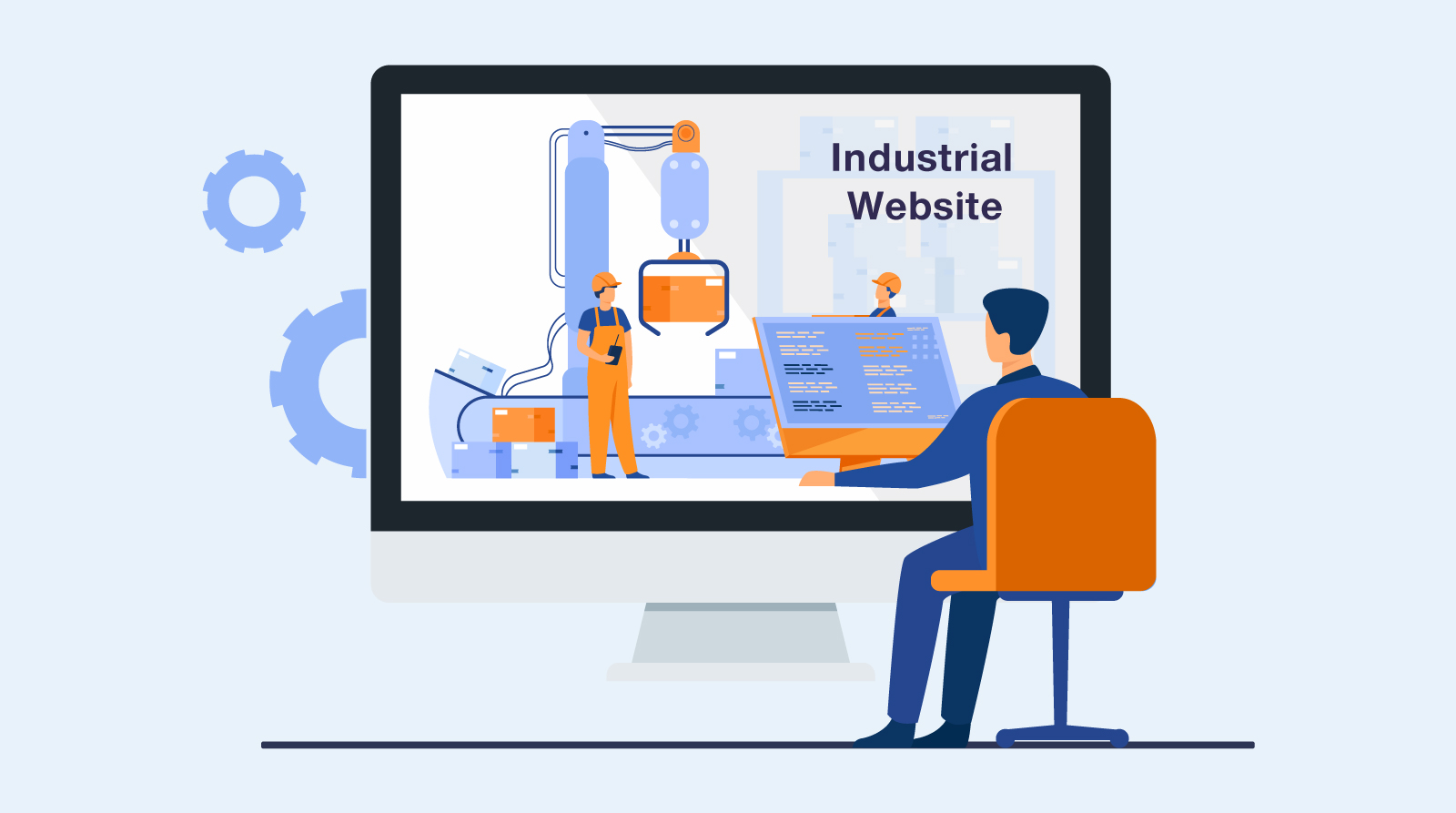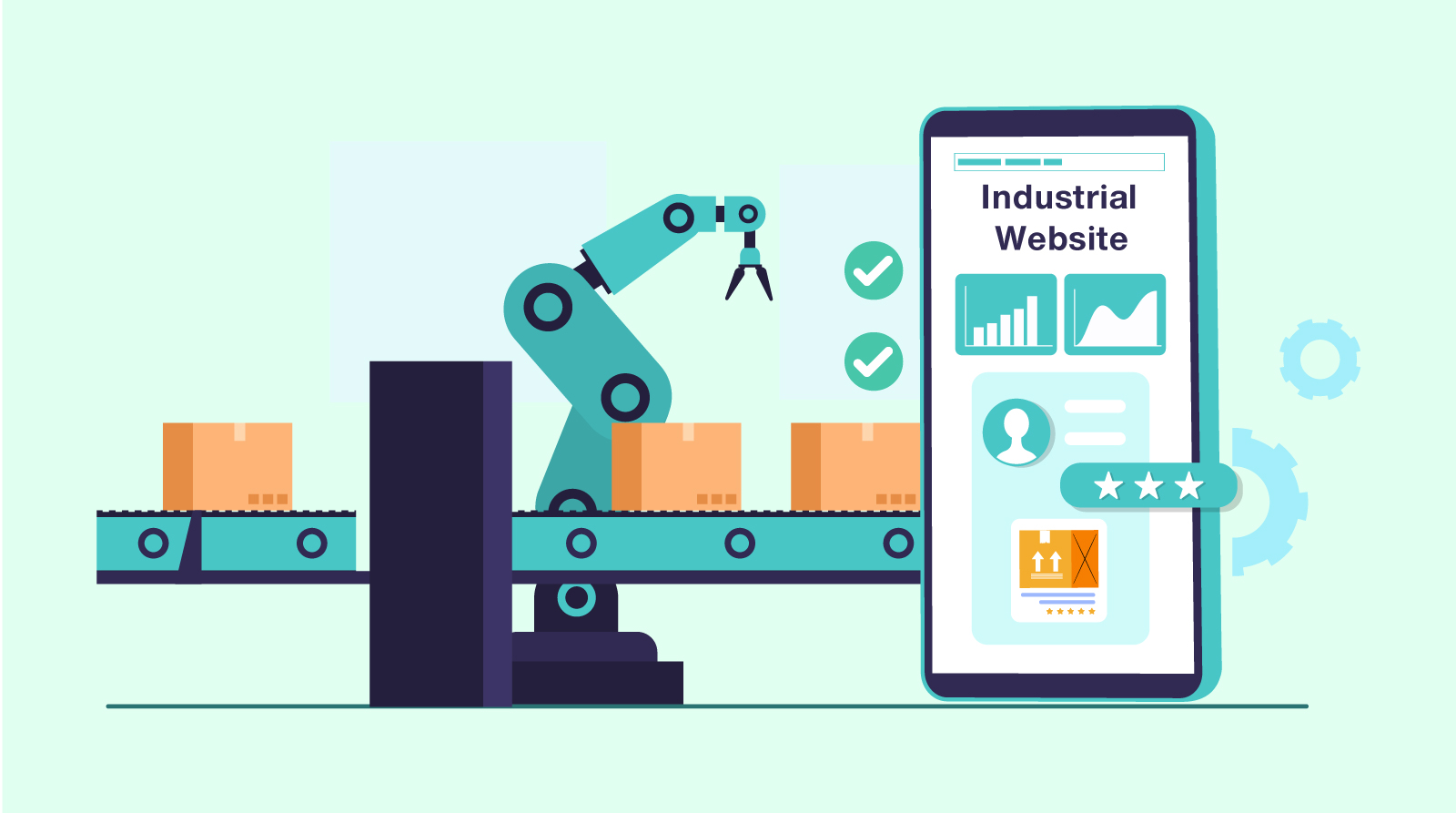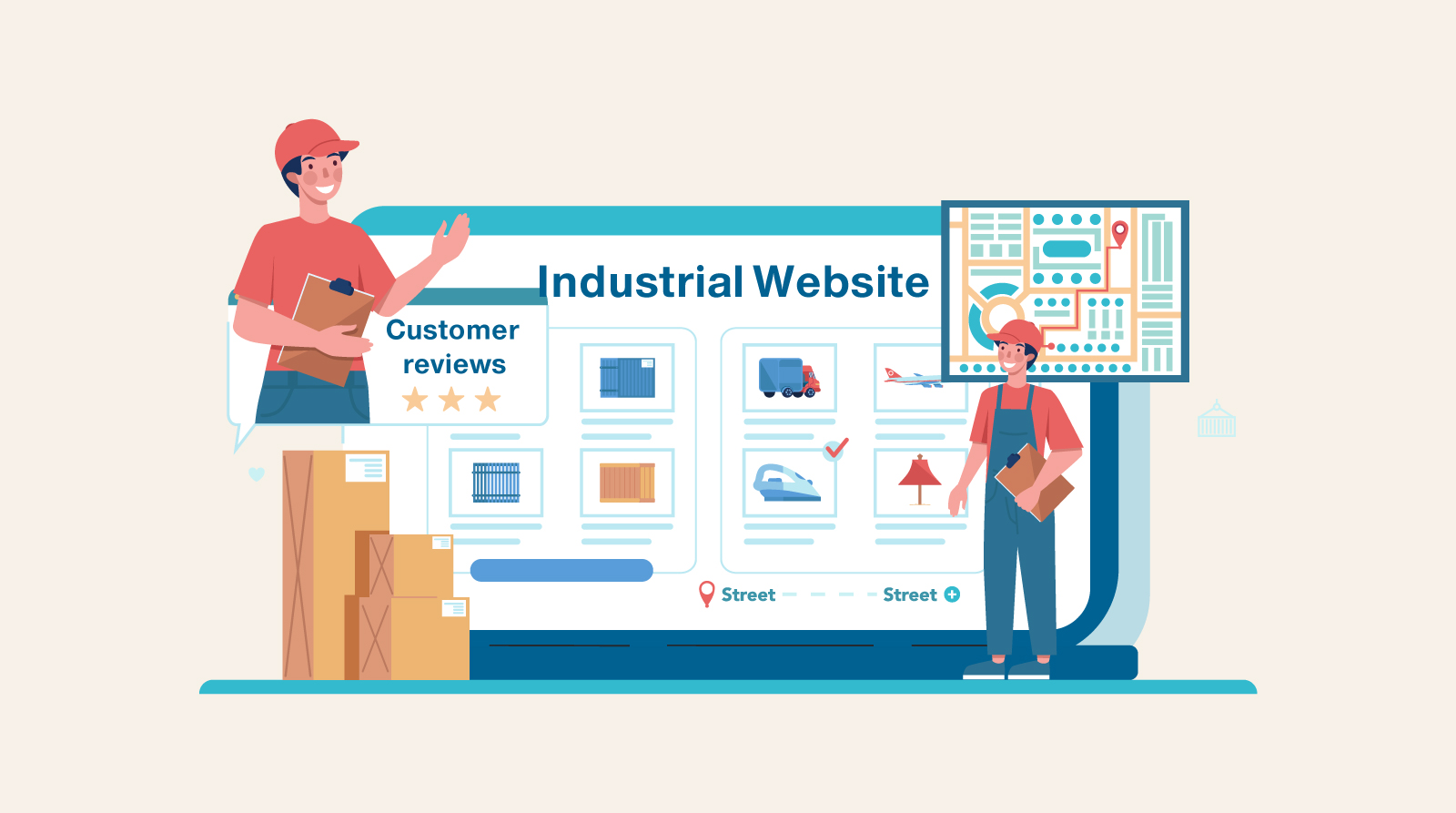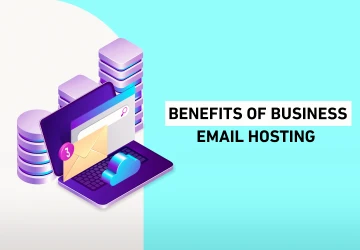Features of Industrial Websites Every Manufacturer Should Know

In the industrial world, your website is usually the first place potential customers will get to know you.
So, how do you make sure that first impression sticks?
Well, experts say that certain industrial website features, like clear product listings and easy-to-use contact forms, play a big role in turning visitors into real clients.
In this guide, I'll take you through the must-have features for any industrial website that wants to stand out.
From simple navigation to mobile-friendly design, we’ll see how getting these details right can help you attract more customers, generate leads, and grow your business.
What Are the Essential Features of Industrial Websites?
1. Content That Establishes Authority
People are always looking for two things when they step into an industrial website: a clear understanding of a product or service and a dose of expert guidance.
Instead of loading your site with a brochure-like showcase of your company’s story, experience, and flashy credentials, flip the script—put your buyers’ challenges front and center and show them the magic behind your solutions.
Say you’re inviting your customers into a space where every word speaks directly to their needs.
When you meet their challenges head-on, you’re not just sharing information—you’re starting a conversation that feels personal and engaging.
Visitors will linger longer, click around curiously, and take actions that matter.
Whether it’s exploring your handy reference tools, digging into your online catalogs, perusing step-by-step how-to guides, or even asking for that consultation they’ve been mulling over.
When your website unpacks how you can turn their problems into solutions, trust grows, and your expertise shines through.
Keep in mind that every visitor is unique.
Some will breeze through your pages, grabbing the highlights and clicking for more details, while others might download e-books, case studies, or white papers to savor at their leisure.
And then some love the rhythm of regular updates—blog posts or newsletters that keep them informed and inspired.
2. A Dedicated Blog or Resource Library
One of the most powerful industrial website features you can offer is a blog or resource library.
Why?
Because today’s buyers aren’t waiting around to be sold to—they’re doing their own research.
Most of them get about 57-70% through the buying process before even reaching out to a company.
That means your website needs to offer helpful, easy-to-find content that builds trust from the very first click.
A blog or resources section gives you the perfect space to share your expertise, highlight industry-specific tools, and indirectly support your product listings by answering the questions your potential buyers are already Googling.
To make it work, here are a few tips:
Keep a Consistent Publishing Schedule—People love reliability. Whether it's once a week or a few times a month, a steady flow of content helps keep your readers engaged, builds your email list, and improves your search rankings—making your site easier to find. Regular posts also signal to Google that your site is active, which is another win for your visibility.
Focus on Education, Not Selling—The best industrial website features don’t scream “buy now”—they whisper “here’s how we can help.” Use your blog to answer common questions, solve real problems, and share insights that matter. Think how-to guides, product comparisons, or tips on choosing the right industry-specific tools.
Play the Long Game—Building a great blog isn’t a sprint; it’s a marathon. But over time, your efforts snowball. You’ll start attracting more traffic, growing your audience, and getting leads who already see you as a trusted resource.
3. Exclusive Gated Content for Leads
One of the most underrated industrial website features that can seriously boost your lead generation game is gated content—think of it as the VIP section of your site.
It’s where you keep your most valuable content: ebooks, white papers, webinars, case studies, and deep-dive videos.
This type of content helps your buyers tackle real-world problems and better understand how to use your product listings or select the right industry-specific tools.
Here’s how it works: instead of giving this premium content away freely, you offer it in exchange for a little something—like a name and email address.
It’s a win-win.
They get free, helpful insights, and you get a warm lead you can follow up with.
Not too shabby, right?
To make it work, here are a few smart moves:
Build Dedicated Landing Pages—Don’t just throw a form onto any page. Create a clean, focused landing page for each offer. This gives your visitors one clear action to take—download your content. Keep it short and sweet, with a simple form. Just a name and email are plenty.
Keep One Offer per Page—Each landing page should highlight just one piece of gated content. This makes it crystal clear what your visitors are getting. Whether it’s a “How to Choose the Right Industry-Specific Tools” guide or a “Checklist for Comparing Product Listings,” one focused message always works better than cluttered choices.
Start Small, then Grow—You don’t need 15 landing pages right away, but here’s a fun fact: Companies that do have more than 15 tend to generate way more leads. Start with one or two strong offers, then keep adding more over time.
4. Consistently Fresh and Updated Content
Let’s face it—keeping content fresh isn’t always easy.
Between running your business and managing day-to-day operations, posting regular updates to your site can easily fall to the bottom of your to-do list.
But here’s the thing: when it comes to powerful industrial website features, fresh content is non-negotiable.
Why?
Because the more regularly you publish helpful, relevant content, the more chances you create to attract new visitors, engage existing ones, and generate leads.
Think of it this way: your website isn’t a one-and-done brochure—it’s a living, breathing resource.
And your prospects are out there Googling solutions every day.
A simple blog is a great place to start.
Share stories about customer wins, explain how your industry-specific tools solve real problems, or break down your product listings in ways that help buyers make better choices.
Once you’ve found your rhythm, you can dig deeper with content like spec sheets, white papers, and eBooks—great pieces for lead generation or even gated content.
What matters is consistency.
Whether it’s once a week or twice a month, find a schedule that works and stick to it.
Google loves it, your visitors will appreciate it, and your site will become a trusted hub in your niche.
5. Mobile-Optimized Design
No one can deny that the old days of desktop-only websites are long gone.
These days, a huge number of people—over 64.04% and counting—are visiting websites from their phones or tablets.
So, if your site isn’t built for mobile, that’s a big problem.
One of the most important industrial website features today is a design that looks and works great on any device.
Think about it this way: someone is out and about, quickly checking your site for product listings —and the page is slow, hard to read, or just plain frustrating to use.
Chances are, they’ll leave before they even see what you offer.
That’s where mobile optimization comes in.
A mobile-friendly site means everything fits the screen nicely, the text is easy to read, the buttons are big enough to tap, and it all loads fast.
It makes your site more inviting and easier to explore, which keeps people around longer.
And let’s not forget Google.
If your website isn’t mobile-optimized, it could get pushed down in search results.
Google wants users to have a good experience, and mobile performance is part of that.
6. Streamlined Contact Forms
Sadly, a lot of customers may leave your site without ever reaching out just because getting in touch wasn’t easy enough.
That’s why one of the most overlooked yet powerful industrial website features is a simple, user-friendly contact setup.
Start by putting your key contact info—like your address, phone number, and email—right in the footer of every page.
That way, no matter where visitors are on your site, they can easily find a way to connect.
Then, look at your contact forms.
Are they long and intimidating? Or quick and easy?
The sweet spot is asking for just the basics: name, email, and a short message or dropdown asking what they’re interested in.
Maybe they’re looking at your product listings or want to learn more about your industry-specific tools. Either way, make it as painless as possible to get in touch.
The goal isn’t to get all the info upfront—it’s to start the conversation.
Once you’ve made that connection, you can learn more about their needs and guide them from there.
7. Modern and Professional Aesthetic
Yes, and I’m one of them—one of those people who’ll instantly judge a business by the look of its website.
And guess what?
So are your potential customers.
The way your site looks and feels says a lot about who you are as a company.
That’s why one of the most essential industrial website features today is a modern, professional design.
Now, what that looks like can depend on your specific industry or product.
But in general, today’s winning websites keep things clean and simple.
It’s less about flashy animations and more about fast load times, smooth mobile performance, and easy navigation.
Your product listings and industry-specific tools should be front and center—not buried under clutter or lost in an outdated layout.
A good modern design uses clear fonts, smart use of space, and colors that match your brand without overwhelming the eyes.
It should guide visitors effortlessly through your site—from the homepage all the way to your contact form—without making them think twice.
The big idea here?
Your website should feel trustworthy and professional at a glance.
Because in just a few seconds, visitors will decide whether they want to stick around—or bounce.
8. Effortless Navigation for Users
Let’s be real—if people can’t find what they’re looking for on your site in just a few clicks, they’re out.
No one’s sticking around to solve a puzzle.
That’s why effortless navigation is one of the most important industrial website features you can invest in.
Your menu should make sense right away.
Think clear labels, simple dropdowns, and a structure that helps visitors move from broad topics down to more specific pages without any guesswork.
Say someone is landing on your homepage.
They’re not going to scroll for ten minutes hoping to stumble onto what they need.
Your navigation should act like a friendly guide: “Hey, you’re looking for X? Great, it’s right here.”
Whether it’s info about your services, technical specs, or even how to get in touch, everything should feel one click away.
9. Reliable Hosting for Seamless Performance
No one’s sticking around to wait for a slow website to load.
We’ve all been there.
Tap a link, it lags, and within seconds, we’re gone.
That’s exactly why reliable hosting is one of the most underrated yet essential industrial website features you need to get right.
It’s not just about what your site looks like or how easily visitors can find your product listings or industry-specific tools.
If your site drags—especially on mobile—you’re losing leads before they even see what you offer.
A fast, smooth site experience starts with dependable hosting.
Services like WP Engine are built for performance and stability, making sure your website is always up, always fast, and ready to serve visitors on any device.
10. Comprehensive Product Specifications
The worst thing you can do when you're trying to sell something—especially in the industrial world—is to keep important details hidden.
People visiting your site, particularly engineers and technical folks, aren’t there for fluff. They want the real data.
If someone clicks into your product listings, they’re expecting to see everything—dimensions, materials, performance specs, and more.
And they want it fast.
No digging through confusing pages or downloading clunky PDFs. Keep it simple, clear, and easy to share with others on their team.
But it's not just the engineers.
You've also got decision-makers like execs checking out your site.
They may not need every detail, but they still want a quick overview to see how your product fits into their bigger picture.
That means your product description should include both the technical specs and a top-level summary.
11. High-Quality Product Photography
Discussing details or telling a story about your products is important, but nothing beats high-quality photos.
In manufacturing, where products can be complex and very specific, clear images let potential buyers see what you offer.
When businesses visit your site, they want to see exactly what they might buy—whether it's a part, a tool, or a machine.
The best way to give them confidence is with clear, high-resolution images that show your products from different angles.
Blurry or low-quality photos only raise doubts and can push potential buyers away.
On the other hand, crisp, well-lit shots show you care about every detail, building trust in your company and your industry-specific tools.
12. Showcase Success Through Case Studies
You know how in the old days, word-of-mouth was everything in the industrial and manufacturing world?
Someone knew someone who used your product, and boom—trust was built.
Well, think of case studies as the modern-day version of that.
A good case study is like a story—one that shows how your product or service solved a real problem for a real customer.
It highlights your strengths, builds credibility, and gives future customers a reason to believe you can help them, too.
It’s not about bragging—it’s about proving your value in a way that feels genuine and relatable.
Plus, when people are checking out your products, seeing a successful use case can be the final push they need to take action.
13. Tools to Build an Email Subscriber Base
Leaving a great offer on the table is tough, especially when you've got content that could truly help your visitors.
That’s where building an email subscriber list comes in as one of the smartest moves for your industrial website features.
It lets you keep the conversation alive with every visitor, even after they've left your site.
Not everyone is ready to buy right away, and that’s okay.
But if they subscribe to get updates, you’ve got the perfect opportunity to share valuable content—whether it’s tips on your, key highlights from your, or important news that matches their interests.
14. Effective Lead Generation Features
You don’t need just a few clicks—you need real action.
One of the most valuable industrial website features isn’t flashy design or clever copy (though those help)—it’s your ability to turn visitors into leads.
That means giving people more than just something to look at. You give them something to do.
Start with landing pages built for conversion.
These aren’t just regular pages—they’re focused, action-driven spaces with forms that invite visitors to take that first step.
Want a quote?
Fill out an RFQ form.
Curious about a product?
Drop your info for a spec sheet.
With the right setup, even a simple name and email form can open the door to a real connection.
But here’s the magic: it doesn’t stop once you get their email.
Marketing automation tools can take over from there—sending useful, personalized emails that guide your lead through the buyer’s journey.
One email might show off your top product listings, the next might break down how your industry-specific tools solve real-world problems.
Because let’s be honest—most visitors won’t be ready to buy right away.
But that doesn’t mean you can’t stay top of mind, provide value, and build trust until they are.
15. Integration with Social Media Profiles
Even if you’re in manufacturing, where things can feel strictly B2B and all-business, social media still matters—a lot.
That’s why one of the must-have industrial website features is simple but powerful: linking your site to your social profiles.
Think of it like this—your website is your home base, but your social channels are where your brand comes to life.
Make it easy for visitors to find those channels by adding clean, clickable icons in your website’s footer. It’s a small move with a big impact.
Anyone scrolling through your site can quickly jump over to your LinkedIn, Facebook, Instagram, or wherever you’re active.
16. Clear Calls-to-Action on Every Page
If someone’s on your site, chances are they’re not just killing time—they’re actually interested in what you do.
That’s your golden moment.
So instead of letting them wander off, give them a little nudge in the right direction with clear, simple calls-to-action (CTAs).
Think of CTAs like friendly signs that say, “Hey, want to learn more?” or “Need a quote? Click here.”
But don't make it too pushy or confusing—keep it straightforward and inviting.
The goal is to guide your visitors effortlessly from one step to the next, making it easy for them to take action without any hassle.
17. Robust Analytics and Tracking Tools
You can’t really improve your website if you don’t know what’s happening behind the scenes, right?
That’s where analytics and tracking tools come in handy.
With tools like Google Analytics, you can get a full view of who's visiting your site, how long they’re staying, and what pages they’re checking out.
These tools help you see where your visitors are coming from, which pages they find most interesting, and what devices they’re using.
This kind of information is key to figuring out what’s working well and what’s not, so you can make changes based on real data, not just guesswork.
Oh, and tracking pixels are also super helpful!
These little pieces of code track user behavior and conversions.
They let you see how visitors interact with your content and whether your marketing campaigns are doing their job.
It’s all about using that data to make smarter decisions.
FAQs
What Are the Features of Industrial?
Industrial features focus on high-performance machinery, specialized tools, and detailed product specifications tailored to manufacturing needs.
What Are the Features of a Website?
Website features include user-friendly navigation, responsive design, fast loading speed, and clear calls-to-action for better engagement.
What Are the Main Features of an E-commerce Website?
E-commerce websites feature secure payment gateways, product catalogs, customer reviews, and easy checkout processes to enhance the shopping experience.
Final Thoughts
As promised, we’ve covered the essential features every industrial website needs to make a lasting impression and convert visitors into customers.
From intuitive navigation to mobile optimization, each element plays a crucial role in enhancing user experience and boosting engagement.
One key piece of advice: regularly test and update your website to stay ahead of industry trends and meet evolving customer expectations.
A website that adapts to changes will always outperform one that doesn’t.
If you’re ready to optimize your site for maximum impact, don’t hesitate to reach out.







